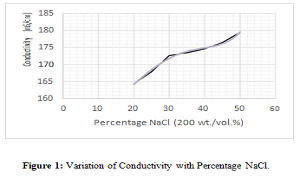
Meet Oza
Pandit Deendayal Petroleum University, India
Title: Experimental study of combined electrolytes for electrochemical deburring process
Biography
Biography: Meet Oza
Abstract
Statement of the Problem: Electrochemical deburring (ECD) appears to be very promising in the field of precision manufacturing. High precision and machining rates of this micro-machining technique has led to a wide variety of industrial applications, especially in mass production cycles. The study in this paper focuses on the application of combination of different electrolytes and control over the variation of its composition during ECD operations. In this study, various combinations of sodium chloride and sodium nitrate solutions are used as electrolytes and the performance of ECD has been evaluated.
Methodology & Theoretical Orientation: Testing solutions, with various percentage combinations were prepared in laboratory for various combinations of electrolytes, sodium chloride and sodium nitrate, with individual concentrations providing maximum machining rates. Conductivity was measured for each sample and recorded. Standard conductivity versus composition charts and equations were prepared corresponding to the measurements. Experimental trials were conducted on the available setup. The material removal rates and current densities were calculated and compared.
Conclusion & Significance: The measured values of conductivity for these combinations show a growth with respective increment in sodium chloride proportions. The interpolation models obtained from the plots can be utilized in industrial ECD operations to control and manipulate concentration of electrolytes. The MRR and current densities also are proportionate to the percentage of sodium chloride in the solution. Hence, it can be concluded that the effect of sodium chloride in the combination is more dominant. At the same time more stray cuts are observed with higher NaCl values.

